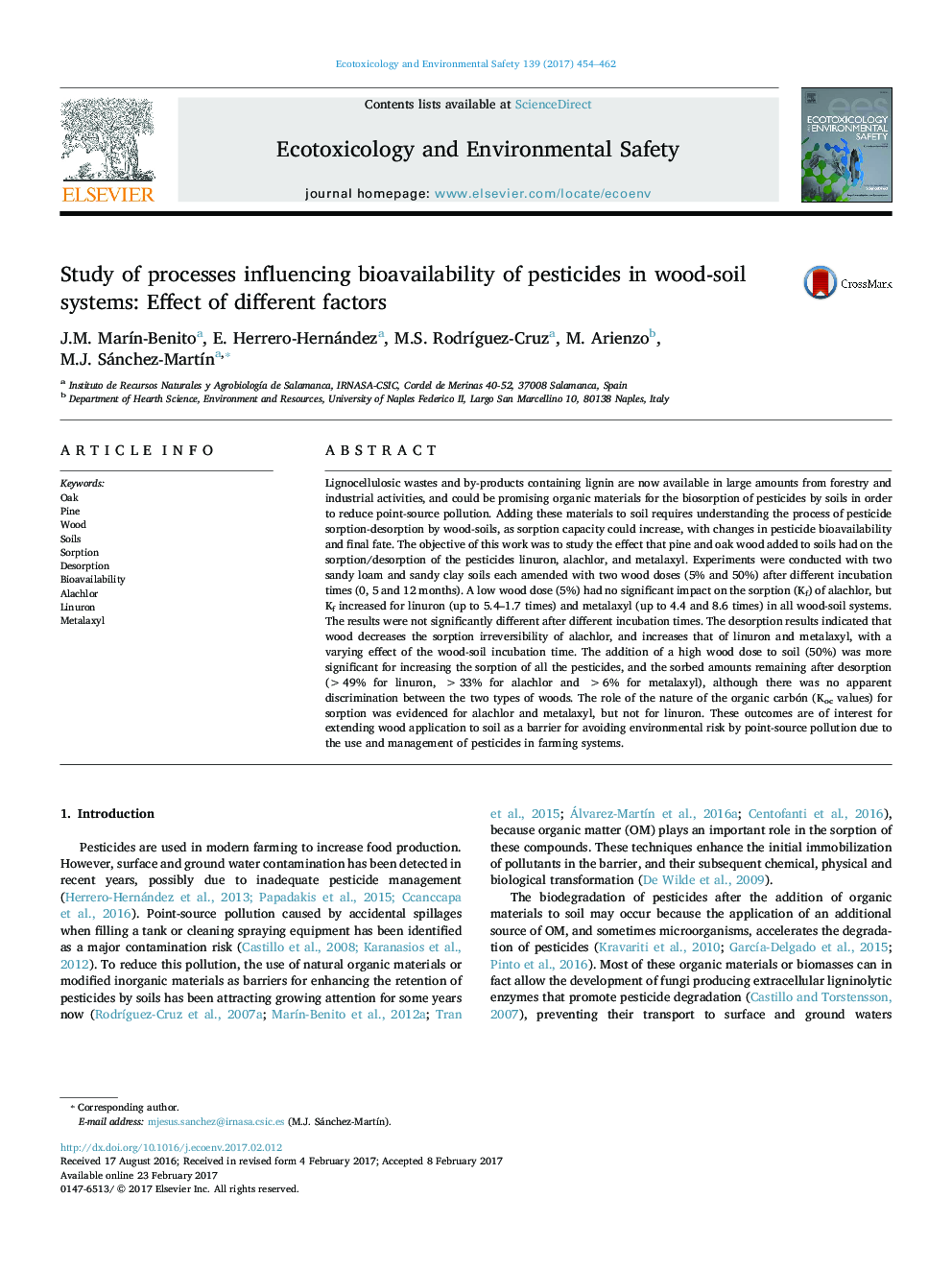| Article ID | Journal | Published Year | Pages | File Type |
|---|---|---|---|---|
| 5748021 | Ecotoxicology and Environmental Safety | 2017 | 9 Pages |
â¢Factors influencing sorption-desorption of pesticides in wood-soil systems are studied.â¢Low dose of wood increased sorption of linuron and metalaxyl by soils but not of alachlor.â¢High dose of wood increased the sorption of all studied pesticides by soils under all conditions.â¢Changes in desorption and bioavailability of studied pesticides from woods-soils was variable.â¢Pesticides, soils and incubation time have to be considered in the subsequent dissipation of pesticides in wood-soil systems.
Lignocellulosic wastes and by-products containing lignin are now available in large amounts from forestry and industrial activities, and could be promising organic materials for the biosorption of pesticides by soils in order to reduce point-source pollution. Adding these materials to soil requires understanding the process of pesticide sorption-desorption by wood-soils, as sorption capacity could increase, with changes in pesticide bioavailability and final fate. The objective of this work was to study the effect that pine and oak wood added to soils had on the sorption/desorption of the pesticides linuron, alachlor, and metalaxyl. Experiments were conducted with two sandy loam and sandy clay soils each amended with two wood doses (5% and 50%) after different incubation times (0, 5 and 12 months). A low wood dose (5%) had no significant impact on the sorption (Kf) of alachlor, but Kf increased for linuron (up to 5.4-1.7 times) and metalaxyl (up to 4.4 and 8.6 times) in all wood-soil systems. The results were not significantly different after different incubation times. The desorption results indicated that wood decreases the sorption irreversibility of alachlor, and increases that of linuron and metalaxyl, with a varying effect of the wood-soil incubation time. The addition of a high wood dose to soil (50%) was more significant for increasing the sorption of all the pesticides, and the sorbed amounts remaining after desorption (>49% for linuron, >33% for alachlor and >6% for metalaxyl), although there was no apparent discrimination between the two types of woods. The role of the nature of the organic carbón (Koc values) for sorption was evidenced for alachlor and metalaxyl, but not for linuron. These outcomes are of interest for extending wood application to soil as a barrier for avoiding environmental risk by point-source pollution due to the use and management of pesticides in farming systems.
Graphical abstractDownload high-res image (277KB)Download full-size image
